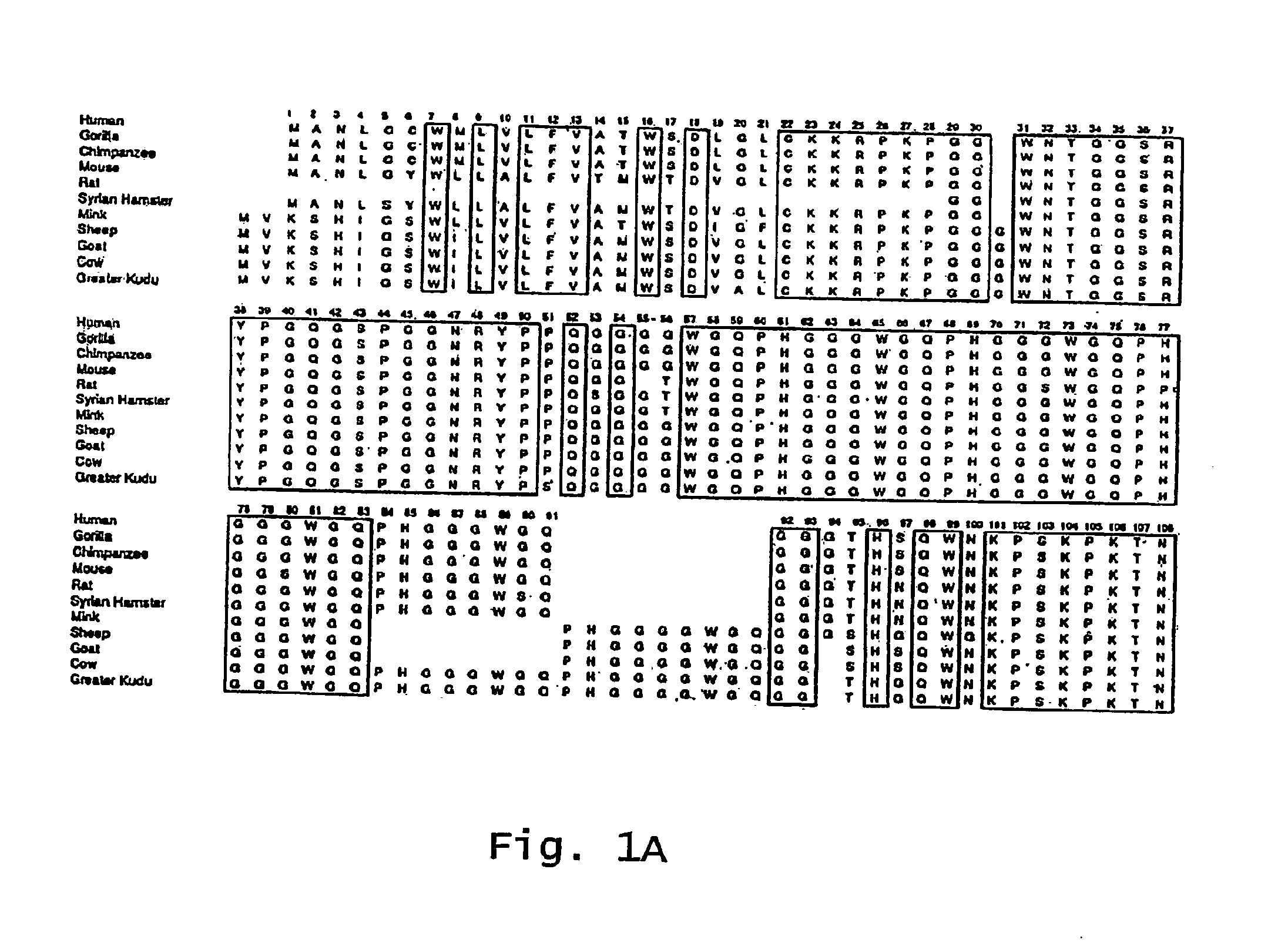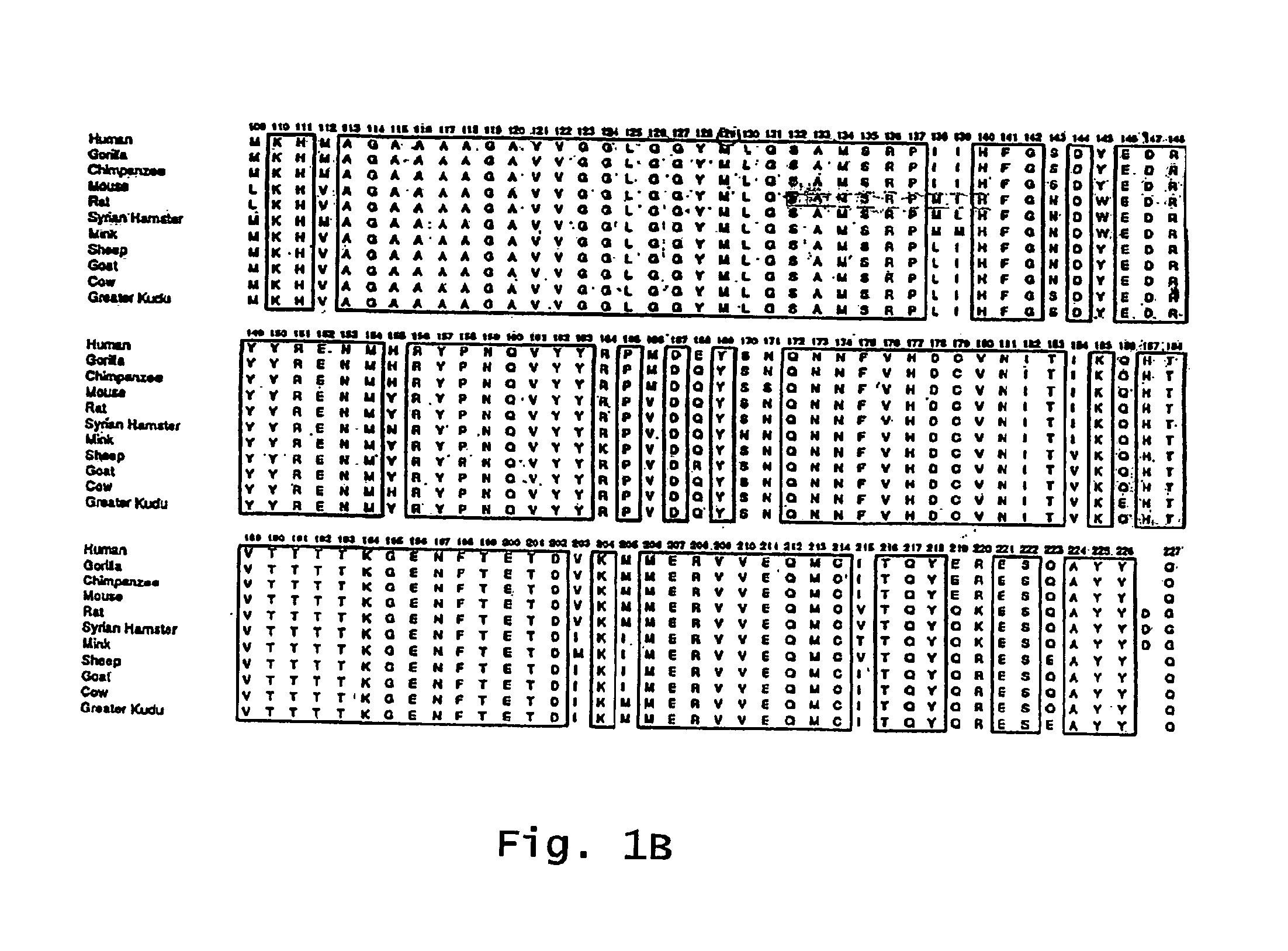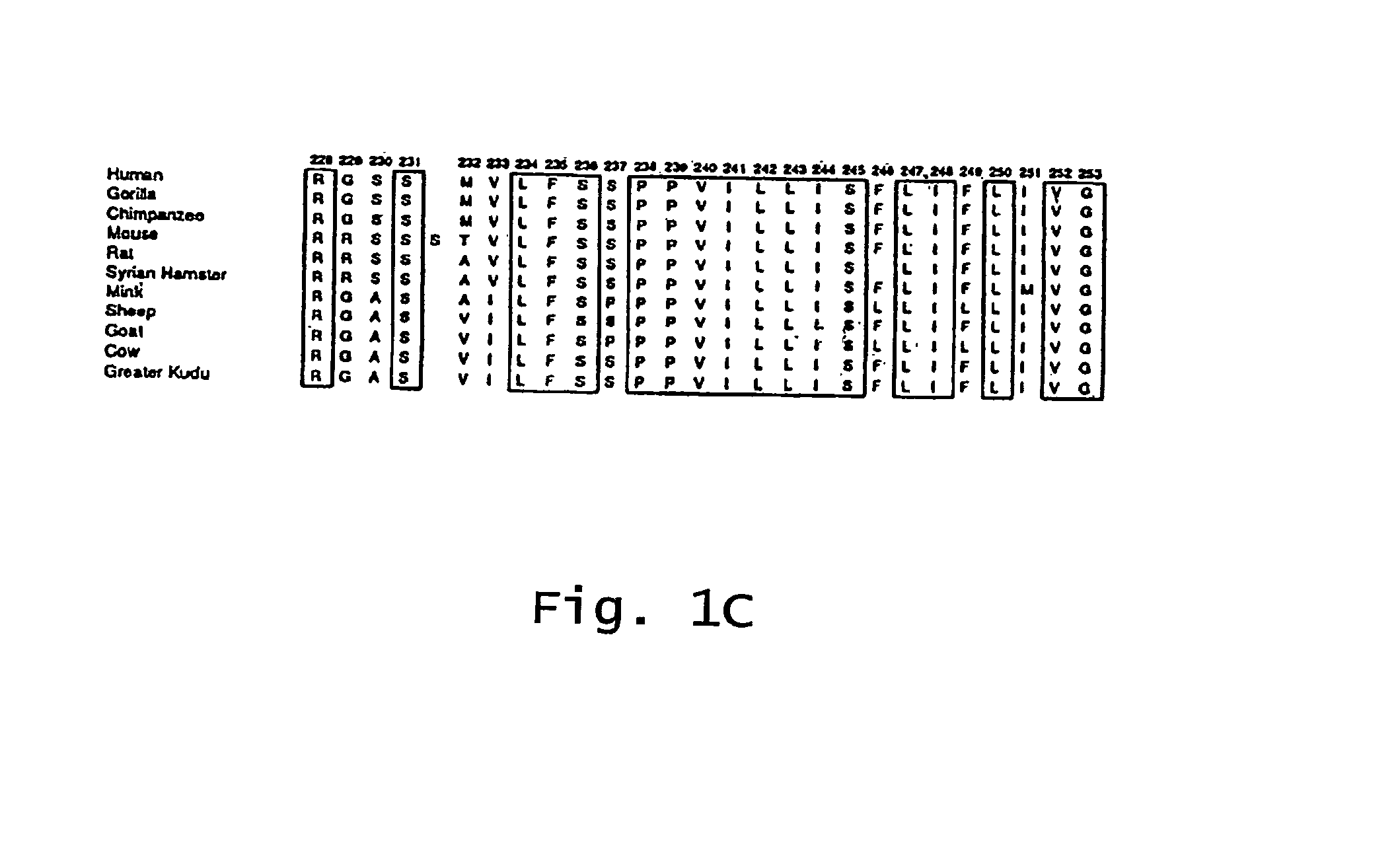Mucosal immunization to prevent prion infection
a technology of mucosal immunization and prion, which is applied in the field of mucosal immunization to prevent prion infection, can solve the problems of increasing the burden on health care, no effective treatment or prevention method for prion disease in humans, and increasing the prevalence of neurodegenerative disorders. and/or toxicity, and all have limitations in terms of pharmacokinetics and/or toxicity
- Summary
- Abstract
- Description
- Claims
- Application Information
AI Technical Summary
Benefits of technology
Problems solved by technology
Method used
Image
Examples
example 1
Active Immunization with Cholera Toxin B Subunit as Adjuvant
[0082]This example describes the use of a conjugate of recombinant PrP (rPrP) and cholera toxin B subunit as a vaccine to induce mucosal immunity to prion protein in CD-1 mice. Vaccinated mice are then exposed orally to either 139A or ME7 PrPSc, which are both strains of scrapie (Carp and Rubenstein, Semin. Virol 1991; 2:203-213; Kascsak et al., J Virol, 1986; 59: 676-683).
[0083]Cholera toxin (CT) and Cholera toxin B subunit (CTB) (Sigma) are used. The CTB and rPrP are each coupled to N-succinimidyl-(3-(2-pyridyl)-dithio)propionate (SPDP) (Pierce) at molar ratios of 1:30, using a previously published protocol (Czerkinsky et al., Proc. Natl. Acad. Sci. (USA), 1989; 57:1072-1077). The preparations are freed of unreacted SPDP by gel filtration through Sephadex G25 columns (Pierce) or dialysis. The rPrP is then reduced for 20 min at room temperature with 50 mM dithiothreitol in 0.1M sodium acetate buffer-0.1M NaCl (pH 4.5) and ...
example 2
Active Immunization with S. typhimurium Vaccine Strain as Vector
[0087]In this example, mucosal immunity to PrP is induced by use of Salmonella typhimurium vaccine strains as a vector containing the mouse PrP cDNA (Table 1).
[0088]Mouse adapted S. typhimurium strain LVR03 is used. S. typhimurium LVR03 is transformed by electroporation with a plasmid encoding the PrP gene under a bacterial promoter in 10% glycerol-water using a GenePulser (Bio-Rad). The expression of rPrP by the S. typhimurium strain is assessed by SDS-PAGE and Western blotting. The bacteria are maintained on Luria-agar tubes at room temperature or as frozen cultures at −80° C. For vaccine preparation, bacteria are grown from the stock in tubes containing 2 ml of Luria broth (LB) 25 g / L with the addition of 50 μg / ml of ampicillin; then incubated at 37° C., on a shaker, overnight. Then, 50 μl are transferred to new tubes containing 2 ml of LB with ampicillin (LB-amp) liquid, incubated on a shaker for 8 hours at 37° C. a...
example 3
Mucosal Vaccination
[0092]This example describes the comparison and optimization of mucosal immunization protocols in peripherally infected prion model mice. The following vaccines and controls are tested, using 10 mice in each test group (CT=cholera toxin; CTB=cholera toxin subunit B): recPrP, CTB, PrP89-143, CTB-PrP89-143, CTB-recPrP, CTB-recPrP+CT, CTB-PrP89-143+CT, salmonella vector, salmonella LVR01+PrP, and controls.
[0093]Mice have the active vaccine introduced by gastric lavage at 6 weeks of age. Mice are deprived of food for at least 8 hours prior to administration of vaccine and are not fed again until at least 6 hours following the vaccination. These steps are repeated at 1 or 2 week intervals for additional 1 or 2 doses. At 6 weeks the mice are bled. The mice are also bled mid-way through the experiment (at about day 60) and at the time of sacrifice (after they have been determined to be clinically ill on 3 separate occasions or if they never show signs of illness at day 3...
PUM
| Property | Measurement | Unit |
|---|---|---|
| pH | aaaaa | aaaaa |
| conformational | aaaaa | aaaaa |
| time | aaaaa | aaaaa |
Abstract
Description
Claims
Application Information
 Login to View More
Login to View More - R&D
- Intellectual Property
- Life Sciences
- Materials
- Tech Scout
- Unparalleled Data Quality
- Higher Quality Content
- 60% Fewer Hallucinations
Browse by: Latest US Patents, China's latest patents, Technical Efficacy Thesaurus, Application Domain, Technology Topic, Popular Technical Reports.
© 2025 PatSnap. All rights reserved.Legal|Privacy policy|Modern Slavery Act Transparency Statement|Sitemap|About US| Contact US: help@patsnap.com



